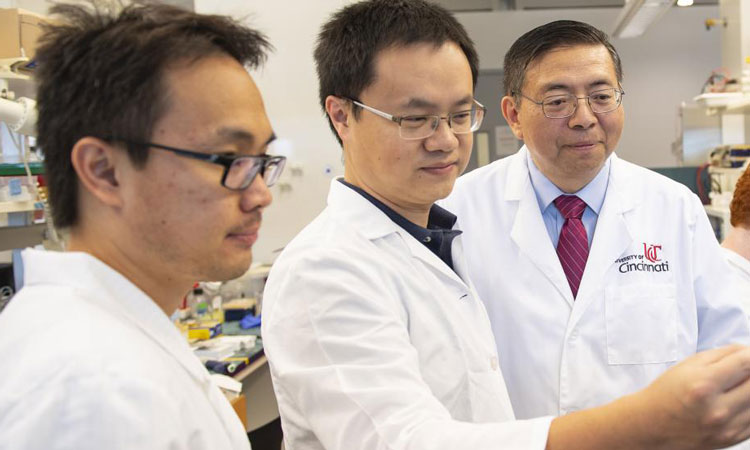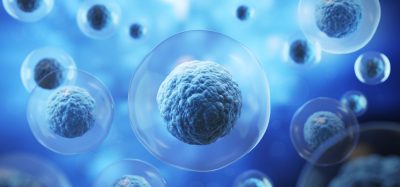Potential target found for tuberous sclerosis complex
Posted: 14 November 2019 | Rachael Harper (Drug Target Review) | No comments yet
A study on tuberous sclerosis complex has expanded the knowledge of the formation of this disease and how it can be targeted at the molecular level.


Chenran Wang, assistant professor in the UC Department of Cancer Biology, and Jun-Lin Guan, Francis Brunning Endowed Chair and professor of cancer biology at UC (credit: Colleen Kelley/University of Cincinnati)
Additional ways to target the molecular processes involved in activating a certain protein complex to potentially develop new therapies for the tumour-causing disorder, tuberous sclerosis complex, have been found by researchers at the University of Cincinnati.
“Tuberous sclerosis complex, or TSC, is a genetic disorder that causes tumours to form in many different organs…” said Dr Chenran Wang, co-corresponding and leading author of the paper. “In this condition, the mutations in the genes called Tsc1 or Tsc2 lead to loss of their tumour suppressing functions, which in turn, results in the hyperactivation of mTORC1 and its abnormal function, responsible for the multiple symptoms of TSC.”
In this research, scientists saw higher autophagy activity in cells without Tsc1; they then created a model without both Tsc1 and an essential autophagy protein, FIP200, present in the developing nervous system and in adult neural stem cells.
“Using this unique model, we uncovered the essential functions of autophagy as a way to keep mTORC1 activity high and to show the abnormal development of neural stem cells without Tsc1,” Wang added.
They then looked at the molecular and metabolic mechanisms of autophagy involved in maintaining high mTORC1 activity and found that it was needed to activate the energy storage, namely lipid droplets in the cells without Tsc.
“The breakdown of lipid droplets by autophagy supplied fatty acid as an energy source to sustain energy production in Tsc1-deficient neural stem cells,” Wang continued. “We also used pharmacological methods to target autophagy and block fatty acids used to treat defects, mimicking human TSC symptoms in these models.”
We are now more informed about the signalling pathways and metabolic alterations involved in TSC…”
These results are key in expanding knowledge of the formation of tuberous sclerosis complex and how it can be targeted at the molecular level, said Jun-Lin Guan, co-corresponding author on the study.
“We are now more informed about the signalling pathways and metabolic alterations involved in TSC caused by Tsc gene mutations and overactive mTORC1,” said Guan. “This will help in the development of new therapeutic concepts for treatment of patients with this devastating disease.”
These findings have been published in Nature Metabolism.
Related topics
Disease Research, Genetic Analysis, Protein, Targets
Related conditions
Tuberous sclerosis complex
Related people
Dr Chenran Wang








